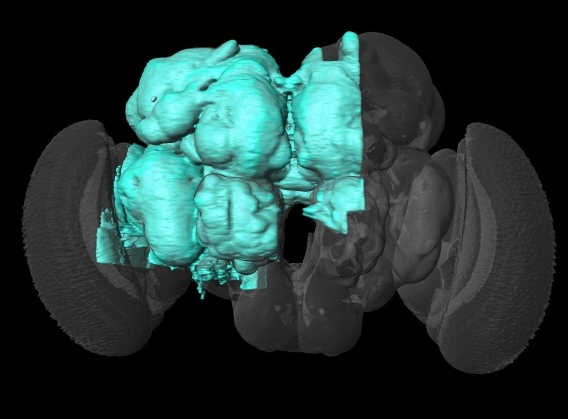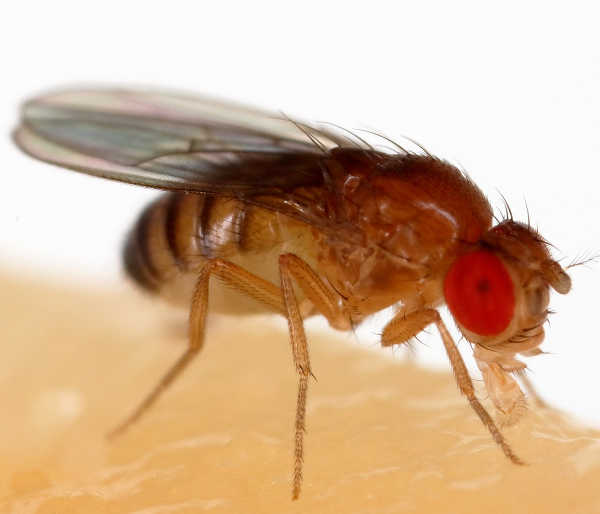| We Have The Wiring Of A Fly's Brain - Now What? |
| Written by Mike James | |||
| Saturday, 25 January 2020 | |||
|
OK, if we are going to be 100% accurate it's only half a brain, but the question still stands. In a remarkable team effort, the wiring diagram, the connectome, for the largest chunk of neural tissue yet, has been mapped out - but this is a long way from understanding it. The project is a collaboration between Google and Janelia at the Howard Hughes Medical Institute. The connection map is of half of a fruit fly brain - a hemi-brain - consisting of approximately 25,000 neurons. It took 12 years of work and cost $40 million to complete the survey of the quarter of a millimeter half-brain tissue. This is only about a third of the total brain but it contains the regions responsible for memory, learning and navigation.
Highlighting indicates the portion of the fly's brain that has been mapped This is not the first complete map of a brain. That of the nematode worm, C. elegans, was mapped in 1986, but this only has 302 neurons so the jump to 25,000 is a big step up. The nematode project was completed by manual effort, mapping the larger brain required the development of automatic methods. This needed improvements in electron microscopy and image processing. The most important new technique was Flood-Filling Networks an improved segmentation algorithm. This iteratively assigns pixels to the same object as a starting seed pixel, so "spreading" the membership like a traditional flood-fill algorithm. The interesting thing about this approach is that you can estimate over what area it can be expected to give good results. Even so a team of 50 checkers was used to make sure that the algorithm hadn't got it wrong. You can take a look at some of the results in the following video and, yes, it is amazing to see the structure: Now we come to the question of what is it all for? The researchers are very committed to their goal and make comparisons with finding the genome and all of the potential advances in medicine that that created. The big difference is that we had a good idea how genes worked and the genome provided us with interpretable data. We have little idea how biological neural networks do anything. At the moment the data is as much a mystery as the original brain. We can use it to explore and test out ideas of gross organization. The problem is that just knowing how the neurons are connected doesn't tell us much about what they are doing. Each neuron is a complex living system with chemical and electrical characteristics - just knowing the connections is only part of the story. In the case of the nematode worm, with far fewer neurons, we managed to make sense of some of the circuits mainly by simulation. Simulating the network and giving it suitable inputs and outputs allowed it to drive a buggy, park a car and balance a pole. These were exciting experiments, but they didn't really get us much closer to understanding how the brain works. Using the fly connectome in the same way is going to be much more difficult, but I hope someone will try. The point is, suppose we do implement the entire fly brain as a simulation and give it suitable inputs and outputs then at the end of the day we might say "oh look this mechanism behaves like a fly" but we still won't know why.
Photo Credit: Sanjay Acharya More InformationA Connectome of the Adult Drosophila Central Brain. Unveiling the Biggest and Most Detailed Map of the Fly Brain Yet Related ArticlesWorm Balances A Pole On Its Tail A Worm's Mind In An Arduino Body OpenWorm Building Life Cell By Cell To be informed about new articles on I Programmer, sign up for our weekly newsletter, subscribe to the RSS feed and follow us on Twitter, Facebook or Linkedin.
Comments
or email your comment to: comments@i-programmer.info |
|||
| Last Updated ( Saturday, 25 January 2020 ) |



